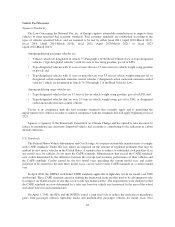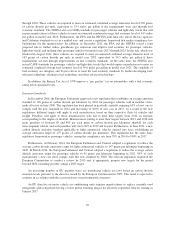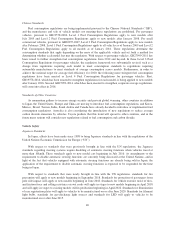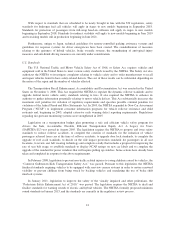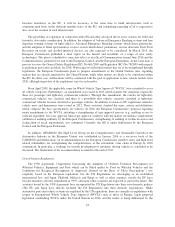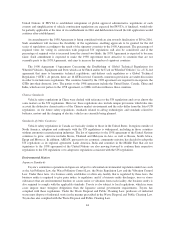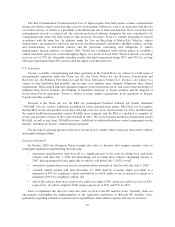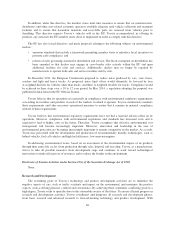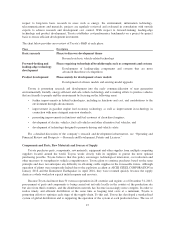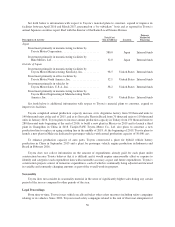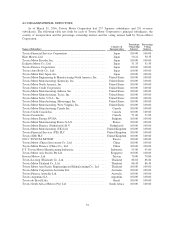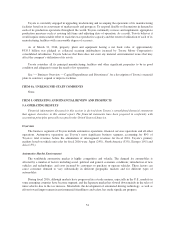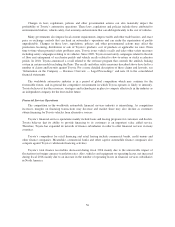Toyota 2015 Annual Report Download - page 52
Download and view the complete annual report
Please find page 52 of the 2015 Toyota annual report below. You can navigate through the pages in the report by either clicking on the pages listed below, or by using the keyword search tool below to find specific information within the annual report.
respect to long-term basic research in areas such as energy, the environment, information technology,
telecommunications and materials, projects are regularly reviewed and evaluated in consultation with outside
experts to achieve research and development cost control. With respect to forward-looking, leading-edge
technology and product development, Toyota establishes cost-performance benchmarks on a project-by-project
basis to ensure efficient development investment.
The chart below provides an overview of Toyota’s R&D at each phase.
Phase Description
Basic research Phase to discover development theme
Research on basic vehicle-related technology
Forward-looking and
leading-edge technology
development
Phase requiring technological breakthroughs such as components and systems
Development of leading-edge components and systems that are more
advanced than those of competitors
Product development Phase mainly for development of new models
Development of all-new models and existing-model upgrades
Toyota is promoting research and development into the early commercialization of next generation
environmentally friendly, energy-efficient and safe-vehicle technology and is making efforts to produce vehicles
that are friendly to people and the environment by focusing on the following areas:
• further improvements in hybrid technologies, including in functions and cost, and contributions to the
environment through advancements;
• improvement in gasoline engine fuel economy technology as well as improvement in technology in
connection with more stringent emission standards;
• promoting improvements in functions and fuel economy of clean diesel engines;
• development of electric vehicles, fuel cell vehicles and other alternative fuel vehicles; and
• development of technology designed to promote driving and vehicle safety.
For a detailed discussion of the company’s research and development infrastructure, see “Operating and
Financial Review and Prospects — Research and Development, Patents and Licenses.”
Components and Parts, Raw Materials and Sources of Supply
Toyota purchases parts, components, raw materials, equipment and other supplies from multiple competing
suppliers located around the world. Toyota works closely with its suppliers to pursue the most optimal
purchasing possible. Toyota believes that this policy encourages technological innovation, cost reduction and
other measures to strengthen its vehicle competitiveness. Toyota plans to continue purchases based on the same
principle and does not anticipate any difficulty in obtaining stable supplies in the foreseeable future. Although
operation of plants were temporarily halted due to the explosion accident at AICHI STEEL CORPORATION in
January 2016 and the Kumamoto Earthquakes in April 2016, they were resumed quickly because the supply
chain as a whole worked on a quick initial response and recovery.
Because Toyota had more than 50 overseas operations in 28 countries and regions as of December 31, 2015,
procurement of parts and components is being carried out not only locally in the country of the production site
but also from third countries, and the distribution network has become increasingly more complex. In order to
realize timely and efficient distribution at the same time as keeping total costs at a minimum, Toyota is
promoting efforts to optimize each stage of the supply-chain. To this end, Toyota has developed a standardized
system of global distribution and is supporting the operation of the system at each production base. The use of
47



